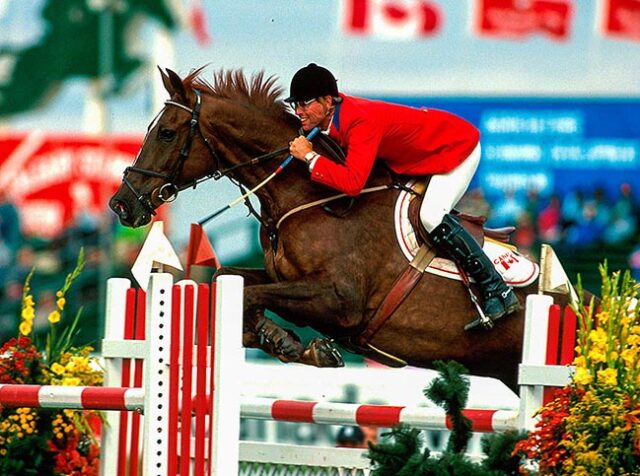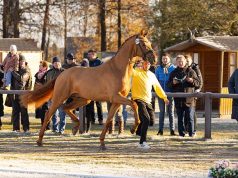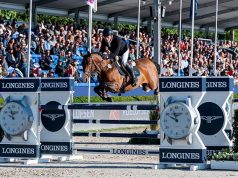By Chris Gould / CWHBA
Photography: Private collection and Peter Llewellyn
In 1988 when the Canadian Warmblood Horse Breeders Association was first conceived, there were relatively few Warmbloods in Canada and even fewer breeding stallions. So how did the Warmblood horse, a horse that is indigenous to Western Europe, find a foothold and ultimately thrive in Canada?
The answer is pretty straightforward; excellence in sport, and rideability. By the time Warmbloods began appearing in North America in the 1970s, they had successfully been transformed in Europe, from the earlier farm/military horse to the preeminent sport horse. During the Montreal 1976 Olympics, equestrian fans in Canada saw up close, the strengths and abilities of such greats as Granat, Warwick Rex, and many others. Canada’s only medal was a showjumping silver with Michel Villancourt riding the Thoroughbred, Branch County xx. But the writing was on the wall.
It is not necessary to chronicle what followed with Canadians riding Big Ben, Mr T, and Aramis; their exploits are well remembered. What is less well known is the adoption by Canadian breeders of the bloodlines and methodologies of the successful European Warmblood studbooks. That journey took full flight with the formation of the CWHBA, bringing the pioneer Warmblood breeders together with a common goal.

Early imports were from Hannover. Abrupt, a direct son of Abglanz – the Trakehner stallion that founded the Hanoverian ‘A’ line – was followed by Arkansas (Aderlass - Nona x Novum). Today, CWHBA pedigrees trace through 27 Abglanz offspring, 18 of which are stallions. The famous Absatz has 47 offspring and Arkansas, the first stallion entered as a breeding sire in the CWHBA studbook, has 198 registered offspring. The A line is well entrenched in Canadian Warmblood breeding... To read the complete article you need to be a subscriber
CLICK HERE TO SUBSCRIBE TO BREEDING NEWS
SUBSCRIBERS CAN READ THE COMPLETE ARTICLE BY LOGGING IN AND RETURNING TO THIS PAGE




